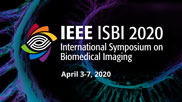Collection:

Low dose computed tomography (LDCT) as an imaging modality has more recently gained greater attention because of the lower dose of radiation it necessitates, alongside its wider use, cost-effectiveness and faster scanning time, making it suitable for screening, diagnosis and follow up studies. While segmentation is in itself a complex problem in imaging, image enhancement in LDCT is also a contentious issue. However, the convenience of the low dose radiation exposure makes the delineation and assessment of organs such as kidney, ureter, and bladder non-trivial. In this research, both image denoising and kidney segmentation tasks are addressed jointly via one multitask deep convolutional network. This multitasking scheme brings better results for both tasks compared to single-task methods. Also, to the best of our knowledge, this is a first time attempt at addressing these joint tasks in LDCT. The developed network is a conditional generative adversarial network (C-GAN) and is an extension of the image-to-image translation network. The dataset used for this experiment is from `Multi-Atlas labeling beyond the cranial vault' challenge containing CT scans and corresponding segmentation labels. The labels of 30 subjects, which are shared publicly, are used in this paper. In order to simulate the LDCT scans from CT scans, the method based on additive Poisson noise on sonograms of CT scans is used. Because of the limited number of subjects, the leave one subject out (LOSO) is used for evaluation. The proposed method works on CT slices, and the network is trained using all of the 2D axial slices from the training subjects and tested on all of the 2D axial slices of the test subjects not seen. Comparing the results of the original single task network (image-to-image translation) and the proposed multitask network (extended version called image-to-images translation) shows that for both tasks, the multitask method outperforms the single-task method while having only half of the network weights. For further investigation, two other conventional single task networks are also exploited for single tasks. The well-known U-net method for segmentation and recently proposed method WGAN for LDCT denoising. On average, the proposed method outperforms U-net by almost a 20% better Dice score and the WGAN by an almost 0.15 lower RMSE.
- IEEE MemberUS $11.00
- Society MemberUS $0.00
- IEEE Student MemberUS $11.00
- Non-IEEE MemberUS $15.00
Videos in this product
Joint Low Dose CT denoising and kidney segmentation
Low dose computed tomography (LDCT) as an imaging modality has more recently gained greater attention because of the lower dose of radiation it necessitates, alongside its wider use, cost-effectiveness and faster scanning time, making it suitable for screening, diagnosis and follow up studies. While segmentation is in itself a complex problem in imaging, image enhancement in LDCT is also a contentious issue. However, the convenience of the low dose radiation exposure makes the delineation and assessment of organs such as kidney, ureter, and bladder non-trivial. In this research, both image denoising and kidney segmentation tasks are addressed jointly via one multitask deep convolutional network. This multitasking scheme brings better results for both tasks compared to single-task methods. Also, to the best of our knowledge, this is a first time attempt at addressing these joint tasks in LDCT. The developed network is a conditional generative adversarial network (C-GAN) and is an extension of the image-to-image translation network. The dataset used for this experiment is from `Multi-Atlas labeling beyond the cranial vault' challenge containing CT scans and corresponding segmentation labels. The labels of 30 subjects, which are shared publicly, are used in this paper. In order to simulate the LDCT scans from CT scans, the method based on additive Poisson noise on sonograms of CT scans is used. Because of the limited number of subjects, the leave one subject out (LOSO) is used for evaluation. The proposed method works on CT slices, and the network is trained using all of the 2D axial slices from the training subjects and tested on all of the 2D axial slices of the test subjects not seen. Comparing the results of the original single task network (image-to-image translation) and the proposed multitask network (extended version called image-to-images translation) shows that for both tasks, the multitask method outperforms the single-task method while having only half of the network weights. For further investigation, two other conventional single task networks are also exploited for single tasks. The well-known U-net method for segmentation and recently proposed method WGAN for LDCT denoising. On average, the proposed method outperforms U-net by almost a 20% better Dice score and the WGAN by an almost 0.15 lower RMSE.
 Cart
Cart Create Account
Create Account Sign In
Sign In
